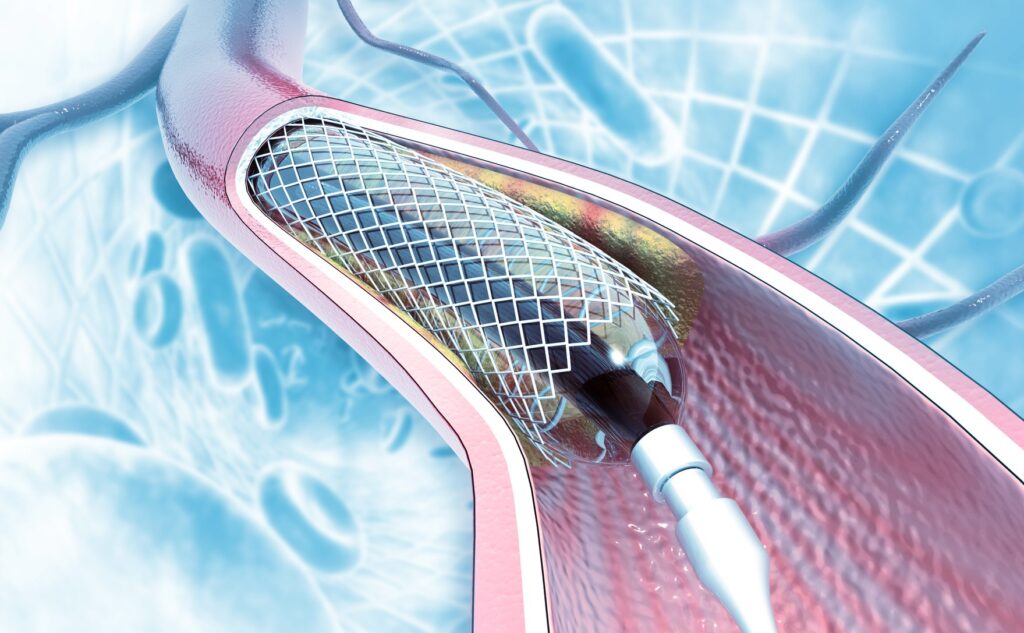People suffering from narrowed or semi-blocked arteries in their legs can find themselves in a vicious cycle – not doing any exercise because of the pain it entails, but finding that the lack of activity only exacerbates the condition.
A newly developed implant that sits just under the skin on the leg is intended to dilate and enhance blood flow through those narrowed arteries with ultrasonic waves, allowing crucial oxygen-rich blood to reach the lower limbs and ease the pain.
Peripheral Artery Disease (PAD) is a condition that restricts the flow of oxygenated blood from the heart to the legs, causing pain when exercising as the muscles do not receive sufficient oxygen for the motion – a disorder known as claudication.

PAD is most commonly the result of narrowed or blocked arteries (occlusions) caused by a buildup of fatty deposits in the vessels known as atherosclerosis. And according to the American Heart Association, some 200 million people around the world are affected by PAD.
The implant is the creation of nascent startup NovaPulse, an Israeli company founded last year under the auspices of the MEDX Xelerator incubator, based in the central city of Or Yehuda.
Once inserted in a simple procedure, the sensor inside the NovaPulse implant activates the sound waves as soon as the patient begins to move, MEDX Chief Technology Officer Gal Atarot tells NoCamels.
“By applying ultrasound on a relatively large artery, the femoral artery [in the upper thigh] for example, the ultrasound generates a natural dilation of the vessel, which increases the blood flow,” Atarot explains.
“This increases the blood flow to the leg and the patient can start to walk with significantly less pain; this is the goal of the device,” he says.
“Think of it as a virtual stent.”
PAD patients often neglect their physical health, Atarot explains. They do not do much, if any, sport, and in many cases cannot work due to the pain of the condition. And at present, he says, the treatment is a drastic lifestyle shift or, in the worst case, surgical intervention.

“They have leg pain and go to their physician [but with] the current standard of care, you can’t do much with this pain except – as the physician says – to start doing exercise, start walking, give up smoking or change their eating habits,” he says.
The implant was developed as part of a “venture creation” program by MEDX with international medical companies.
“We don’t have competition,’ he says of the device. “The basic idea is novel.”
Sign up for our free weekly newsletter
SubscribeWhat makes the implant unique, according to Atarot, is the fact that it can be activated on demand or via an app that is installed on the user’s phone, so that the ultrasonic waves are emitted should the patient feel pain even when at rest.
And because it is connected to the cloud via the app, a physician can fully monitor the patient, helping them to have a more complete understanding of the impact of the implant on the artery, as well as the extent to which an exercise regime is being maintained.
“The implant will have the potential to completely manage those patients, monitor them and follow their activity,” Atarot explains.
The device is designed to avoid more serious medical intervention for patients suffering from PAD, who more often than not, Atarot says, are not in optimum health.

“The most important thing is that this is a significantly less complex intervention, and we don’t touch the vessel itself; it’s all done from the outside,” he says.
“We’re activating a natural mechanism of the vessel to expand itself, to increase the flow, [to cause] less pain,” he explains. “We are giving the patient the chance to do exercise and whatever needs to be done without pain.”
The prototype device has undergone successful animal testing and early next year will be put through clinical trials at Sheba Medical Center, the largest hospital in the entire Middle East with a renowned innovation facility of its own. Bringing it to market, Atarot estimates, will take another couple of years at least and the plan is to seek approval from the US Food and Drug Administration.
Ultimately, Atarot explains, a PAD patient who does not change their bad habits will end up with a much more severe and dangerous occlusion that will require intervention with a much more invasive procedure that surgically opens up the arteries.
And, he warns, if the patient still does not take steps to improve their lifestyle and the pain persists, they will have to undergo another invasive procedure within a year or two as they experience restenosis – when an artery opened surgically returns to a narrowed state.
“When the physician does a full intervention and goes into the vessel to open the occlusion, it’s a cascade of harming the internal part of the vessel and creating restenosis after you open it,” he says.
“The idea of this implant is to break this vicious cycle.”
Related posts

Editors’ & Readers’ Choice: 10 Favorite NoCamels Articles

Forward Facing: What Does The Future Hold For Israeli High-Tech?

Impact Innovation: Israeli Startups That Could Shape Our Future




Facebook comments